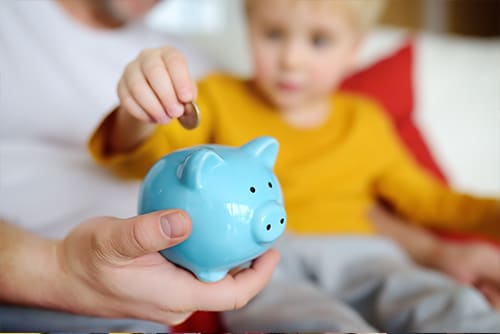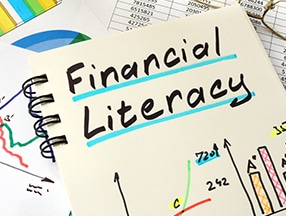
Recently, the National Financial Educators Council (NFEC) conducted a survey in which they asked over 1,500 respondents divided into six separate age demographics, “During 2020, how much money do you think you lost because you lacked knowledge about personal finances?”
The answers were startling. The NFEC learned that respondents estimated they lost $1,634 individually. By taking this data and making the same inference for all the adults in the United States, this would mean financial illiteracy cost $415 billion in 2020. You can see the complete results here; a clear trend in which a lack of financial education is causing greater losses every year.
A new financial literacy survey backed by Charles Schwab asked Americans what they would teach their younger selves about personal finance when considering their current competence. The more than 2,000 adults polled stated: the value of saving money (59%), basic money management (52%), and how to set financial goals and work toward them (51%). Nearly two-thirds (63%) of U.S. adults chose financial education as the most important supplementary graduation requirement to math, English and science.

The BusyKid app teaches financial literacy to children in the following ways:
- Every Friday is payday and establishes a routine, so kids know what’s expected of them
- Children can participate in determining the Save, Share, and Spend percentage breakdown of earned allowance (with parents ultimately controlling the allotments)
- Use of a prepaid Visa card to make choices in the real world and learn to live within a budget – when the money’s gone, it’s gone!
- Allowance can be earned by completing chores, with more challenging tasks correlated with higher payments
- Investing in real stocks such as Disney and Apple
- Setting specific saving goals
- The option to request to “work overtime” to earn more and reach goals faster
The CEO of BusyKid, Gregg Murset, saw the need for financial proficiency as early as 2011, but again, the ramifications of financial illiteracy have become increasingly dire over time. It’s more imperative than ever to provide a hands-on financial education for kids. Stuffing dollars into a piggy bank doesn’t cut it anymore – kids need to learn in a cash-free environment that is representative of the real world. By using the BusyKid app, children are presented with choices and consequences, encouraged to develop a strong work ethic, develop sound financial reasoning, and take a long view to financial wellness that includes sound investments and saving.
When it comes to financial education, BusyKid helps kids to be top of the class, prepared to charge into their futures armed with knowledge and confidence!













